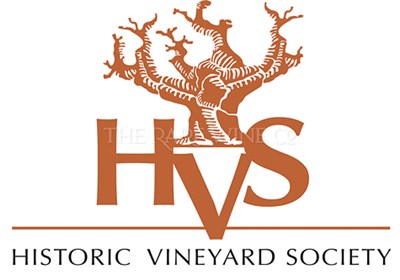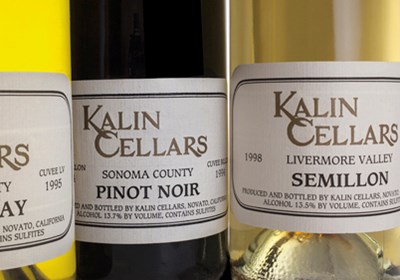
Which site would you like to visit?
By clicking the retail or wholesale site button and/or using rarewineco.com you are choosing to accept our use of cookies to provide you the best possible web experience.
May 5, 2009
Throughout history, great wines have come from difficult sites—with land too poor, and the weather too mercurial, to grow food. It's as true in France, Spain, and Italy as it is proving to be in the New World.
But a story is unfolding in California that rivals anything yet seen. Here, in a State renowned for the generosity of its climate and soils, a small group of winemakers and grapegrowers have sensed that the savagely unyielding mountains on the Sonoma Coast hold the key to growing great Pinot Noir in California.
Led by the pioneering David Hirsch, who arrived in 1978, there is an emerging sense that the very tops of these mountains—in sight of the Pacific above the fog, the air cool but the sunshine brilliant—hold the key to California one day matching the glory of Burgundy's greatest wines. If California Pinot Noir is to someday evoke a magic rivaling great Burgundy, it should happen here, rather than in the warmer, more hospitable Russian River Valley, Carneros, or Santa Lucia Highlands.
If this story is still little-known, we can thank the decision 22 years ago to create a Sonoma Coast AVA—a U.S. appellation controlée that applies to 750 square miles of Sonoma and Marin Counties, stretching up to 30 miles inland, and encompassing widely varying terroirs. The AVA ignores the fact that the areas closest to the sea are vastly different—and for Pinot Noir and even Chardonnay, more promising.
The existence of the oddly misnamed Sonoma Coast AVA has made it difficult for growers near the sea to tell their story, and for those of us who prize sleek, nuanced Pinot Noir to discover their wines. And so insiders invented the term, “The True Sonoma Coast”... or “The True,” a name with meaning only for those in the know.
The story of The True is not just about anonymity, it is about a struggle of man against nature. In this wild, remote area of Northern California, the only way to produce wine is to battle cold, fog, and rain, on the chance that a wine of epic, heroic beauty will emerge.
Adversity is nothing new for Pinot Noir. Its homelands, where it has achieved its highest expressions, are Champagne and Burgundy's Côte d'Or, both notoriously marginal environments.
And marginality is what The True is all about. With France's history as their guide, The True has attracted dozens of winemakers and grapegrowers over the past three decades. The first to do so was David Hirsch, who in the early 1980s struggled with a bewildering jumble of soils in extremely rugged terrain to establish his Hirsch Vineyard. He was eventually rewarded when Williams-Selyem, Kistler, and Littorai all came knocking on his door. At the same time, Taylor Lan planted Pinot on a ridgetop west of Occidental. His Summa Vineyard fruit achieved immortality, producing arguably Williams-Selyem's greatest Pinot Noir.
The work of Hirsch and Lan spawned a second wave of enterprising individuals, ranging from perfectionist Pinot-makers like Marcassin, Flowers, and Littorai to Napa heavyweights like Joseph Phelps, Pahlmeyer, Caymus, and Peter Michael—all inspired by the area's sparse but occasionally magical output.
They found that within The True, there are a small number of sites capable of producing great Pinot Noir and Chardonnay. Yet, due to the ocean's proximity, even the best sites are subject to torrential rain during the growing season. In June 2005, for example, rains nearly wiped out The True's grapes just after flowering. David Hirsch called it “an economic disaster.”
Still, the growers and winemakers persevere, knowing that as in Burgundy, if all goes well something extraordinary can emerge. A common thread among these producers is the understanding that this untamed area is not to be controlled. The challenge of finding the right place in The True has forced growers to rethink the old rules; those that work well in the nearby Russian River Valley simply don't apply here.
David Hirsch notes that because winegrowing is so new to the area that one needs “to refer to the site, let it talk to you over time.” Radio-Coteau's Eric Sussman echoes this idea: “The hardest thing is to step back and listen—to the people who work the vineyards, the weather, the vines.”
What defines The True is a series of ridgetops close enough to the coast to be cooled by the deep, very cold Pacific, yet high enough to bask in brilliant sunshine above the omnipresent summer fog. These conditions make for a very long growing season—bud break can begin as early as February and the harvest can linger into October—creating slowly matured fruit of haunting perfume, aromatic complexity, and bright acidity unlike that found anywhere else in California.
Yet the extremely rugged and diverse topography makes the number of suitable locations few. As Jason Pahlmeyer has said, “It's very difficult to find the right sites out here. This spot will have the wrong soil, that site will have too much fog or wind. Another site will just be solid rock.” Today, The True represents only a tiny faction of the more than 7000 acres of vines in the Sonoma Coast AVA. These are mostly clustered in three small areas:
The Fort Ross area: home to Hirsch, Marcassin, Martinelli, Flowers, Pahlmeyer, and Ehren Jordan's Failla. Marcassin's Estate, Three Sisters, and Blue Slide Ridge also come from this area.
Near Annapolis: where Peay, Brice Jones (formerly of Sonoma-Cutrer) and Rivers Marie's Thomas Brown have planted.
The area west of Occidental: home to such iconic vineyards as Occidental, Summa, Thieriot, Coastlands, and Seascape. Over the past twenty years, some of California's best Pinot Noir producers have been drawn here, including Williams-Selyem, Littorai, and Kistler, and more recently Thomas Brown's Rivers Marie and Evening Land Vineyards.
For producers and consumers who prize purity, finesse and sense of place, The True could be California's most exciting wine region. This is particularly the case for Pinot Noir, whose Holy Grail in the Golden State may ultimately be found here.


New discoveries, rare bottles of extraordinary provenance, limited time offers delivered to your inbox weekly. Be the first to know.
Please Wait
Adding to Cart.
...Loading...


By clicking the retail or wholesale site button and/or using rarewineco.com you are choosing to accept our use of cookies to provide you the best possible web experience.

